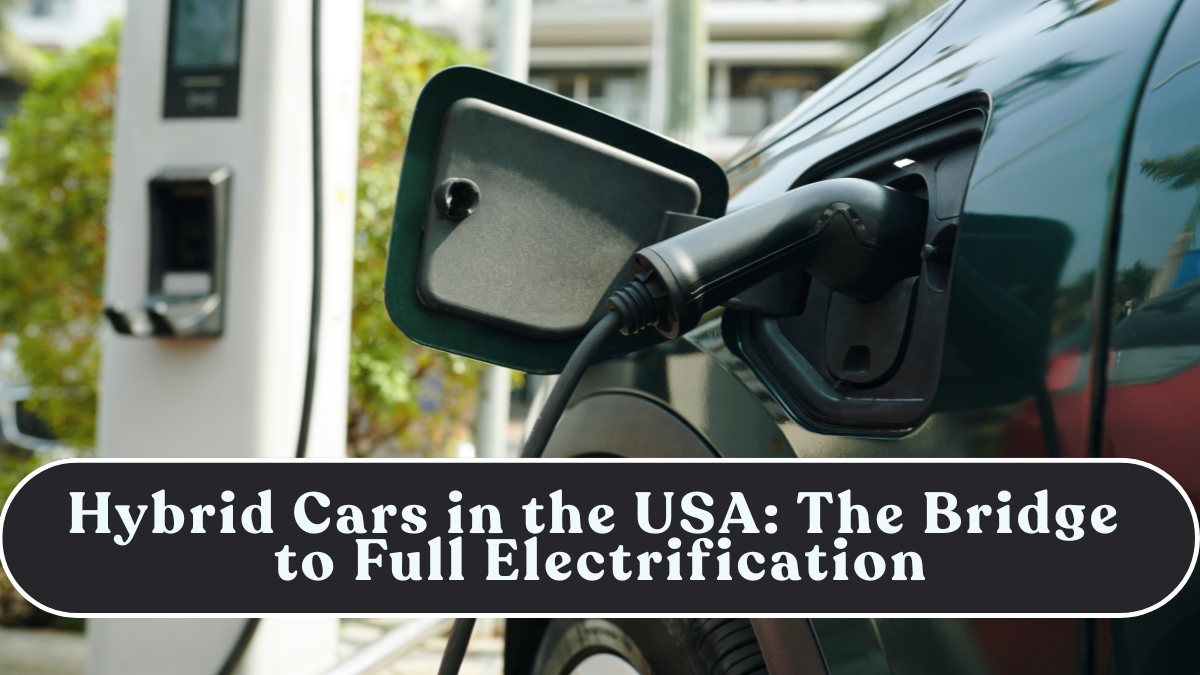While fully electric vehicles (EVs) are stealing headlines, hybrid cars continue to dominate sales in the United States. For millions of drivers, hybrids offer the perfect balance between traditional fuel reliability and electric efficiency. As charging infrastructure expands but remains uneven, hybrid vehicles act as the bridge toward a fully electrified future.

Why Hybrids Still Matter in the USA
Even in 2025, hybrids make up nearly 20% of total U.S. passenger car sales, proving they’re not going anywhere soon. The appeal is simple — hybrids combine gasoline engines with electric motors, improving fuel economy and cutting emissions without relying solely on charging stations.
Key reasons why American buyers love hybrids:
-
No Range Anxiety: Drivers can rely on gas when electric power runs out.
-
Better Fuel Efficiency: Up to 50–60 mpg, making long trips cost-effective.
-
Lower Emissions: Ideal for eco-conscious drivers not ready for full EVs.
-
Smooth Transition to Electric: No need for at-home charging setups.
Top Hybrid Cars in the USA (2025)
| Model | Type | Combined Mileage (mpg) | Starting Price (USD) |
|---|---|---|---|
| Toyota Prius | Full Hybrid | 57 | $27,950 |
| Honda Accord Hybrid | Full Hybrid | 48 | $33,000 |
| Ford Escape Hybrid | Plug-in Hybrid | 40 (EV + Gas) | $40,500 |
| Hyundai Tucson Hybrid | Full Hybrid | 38 | $34,000 |
| Toyota RAV4 Hybrid | Plug-in Hybrid | 42 | $37,400 |
Toyota continues to dominate the segment, while Ford, Hyundai, and Honda have made major gains with plug-in hybrid (PHEV) models that can travel 40–60 miles on electric power alone.
Hybrid vs. EV: Which Is Better for You?
While EVs are cleaner and cheaper to operate, hybrids currently win on practicality.
| Feature | Hybrid Cars | Electric Vehicles (EVs) |
|---|---|---|
| Range | 500–700 miles (combined) | 250–450 miles |
| Refueling Time | 5 minutes | 30 minutes (fast charge) |
| Infrastructure Need | Minimal | Requires chargers |
| Upfront Cost | Lower | Higher |
| Maintenance | Simple | Complex electronics |
This flexibility makes hybrids a top choice in areas with limited charging infrastructure, such as rural states or long-distance highways.
The Policy and Market Landscape
The U.S. government’s Inflation Reduction Act (IRA) supports both EVs and certain hybrid models. However, the incentives vary:
-
Plug-in hybrids (PHEVs) with a minimum 7 kWh battery qualify for up to $7,500 tax credit.
-
Regular hybrids (without plug-in capability) are excluded from federal credits but may qualify for state-level rebates.
States like California, Colorado, and Oregon also reward hybrid owners with carpool lane access and registration discounts.
Meanwhile, automakers are expanding their hybrid offerings:
-
Toyota continues its “multi-path” strategy, investing equally in hybrids, PHEVs, and EVs.
-
Ford is hybridizing its best-sellers — including the F-150 and Explorer.
-
General Motors (GM) reintroduced hybrids in select models to fill the gap before mass EV rollout.
Hybrid Technology Advancements
Modern hybrids are far more sophisticated than earlier versions:
-
Regenerative braking captures kinetic energy to recharge batteries.
-
AI-based drive modes optimize engine and motor usage for maximum efficiency.
-
Solid-state batteries (under development) promise longer life and faster charging.
-
Mild-hybrid systems in luxury cars like Mercedes and BMW improve efficiency without major design changes.
These upgrades make hybrids increasingly relevant — not just transitional.
Consumer Trends and Market Forecast
Hybrid sales are surging in regions where EV adoption lags.
-
Midwest & Southern states (Texas, Florida, Illinois) prefer hybrids due to range flexibility.
-
Younger buyers view hybrids as a cost-effective entry into sustainable mobility.
-
Corporate fleets are transitioning to hybrid SUVs and sedans for lower emissions targets.
By 2030, analysts project that hybrids (including plug-ins) could make up 25–30% of total U.S. car sales, even as full EVs grow rapidly.
Environmental Impact
Hybrid cars emit 30–40% fewer greenhouse gases than standard petrol vehicles and consume up to 35% less fuel. As a result, they play a vital role in bridging the carbon gap until renewable-powered EV infrastructure becomes universal.
Conclusion
Hybrid cars are not a fading technology — they’re an essential stepping stone in America’s path to electrification. For many drivers, they strike the perfect balance of convenience, cost, and conscience. As battery innovations accelerate and charging networks mature, hybrids will continue to power the U.S. transition — proving that the journey to full electrification begins with a hybrid start.
FAQs
Are hybrid cars still worth buying in 2025?
Absolutely. They offer fuel efficiency, low emissions, and flexibility — especially for long-distance or rural drivers.
What’s the difference between a hybrid and a plug-in hybrid?
A hybrid recharges its battery through braking and the engine, while a plug-in hybrid can be charged externally and run longer on electric power.
Do hybrids qualify for tax credits in the USA?
Only plug-in hybrids (PHEVs) qualify for federal incentives under the Inflation Reduction Act.
How long do hybrid batteries last?
Most hybrid batteries last 8–10 years or 150,000 miles, often covered under warranty.
Will hybrids be phased out?
Not soon. Hybrids will remain key until nationwide EV charging becomes fully established across the U.S.
